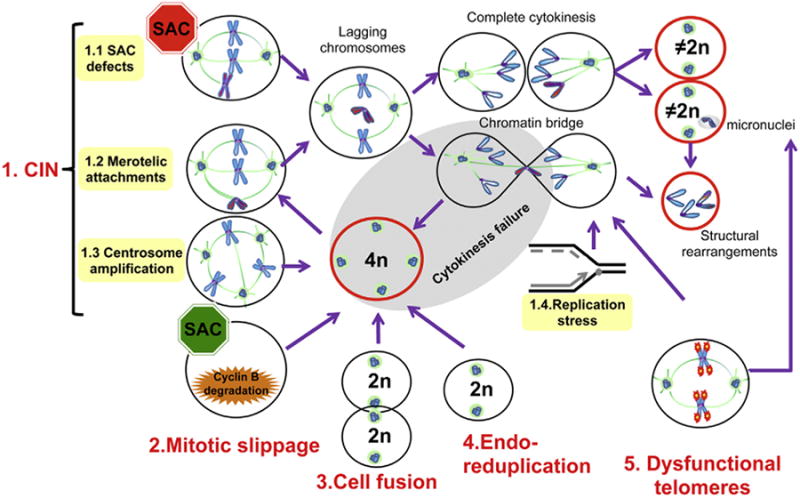Fig. 1.

Routes to aneuploidy and tetraploidy. (For interpretation of the references to color in this figure legend, the reader is referred to the web version of this article.) In a CIN state (1, top left) deficiency in SAC signaling (1.1) and merotelic attachments (1.2) result in lagging chromosomes that can generate mononucleated aneuploid cells, aneuploid cells containing a micronucleus, ortetraploid cells (cells in red) due to chromatin bridging and cytokinesis failure (grey area). Tetraploid cells arising from different mechanisms present centrosome amplification (1.3), which in turn can lead to multipolar mitotic spindles and lagging chromosomes. Finally, replication stress (1.4) is a trait of CIN cells that can lead to chromatin bridging and thus, cytokinesis failure or structural rearrangements. Mitotic slippage (2) occurs when the SAC is activated for an extended period of time due to unattached kinetochores and slow Cyclin B degradation. This can result in mitotic exit without cytokinesis and thus tetraploidy. Cell fusion (3) of diploid cells can form atetraploid/polyploid cell. Endoreduplication (4) occurs when DNAis duplicated but mitosis fails to occur, generating a tetraploid and/or polyploid cell. Dysfunctional telomeres (5) can undergo BFB cycles that can lead to chromatin bridging, structural rearrangements and/or cytokinesis failure. Chromosomes with eroded telomeres undergo frequent mis-segregation, and are also a source of aneuploidy. Because micronuclei have been linked to s-CIN and chromothripsis, all defects leading to their formation are hazardous and enable further GIN.
